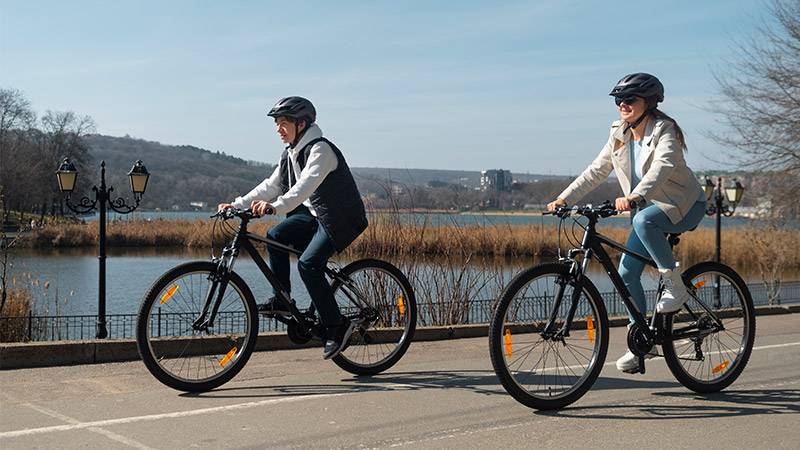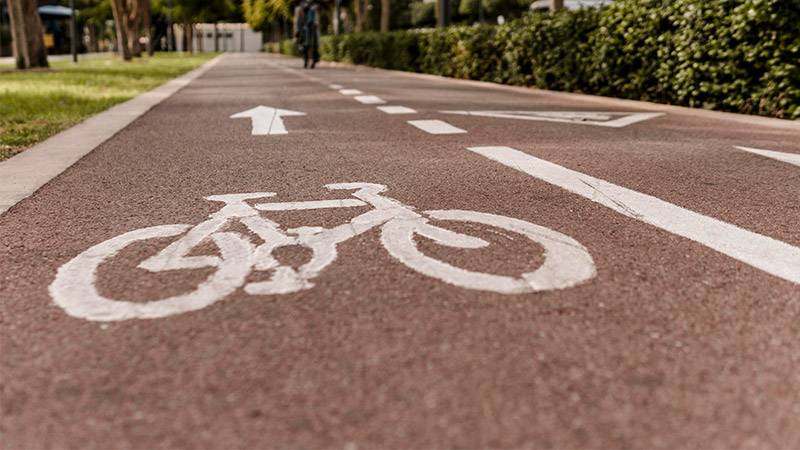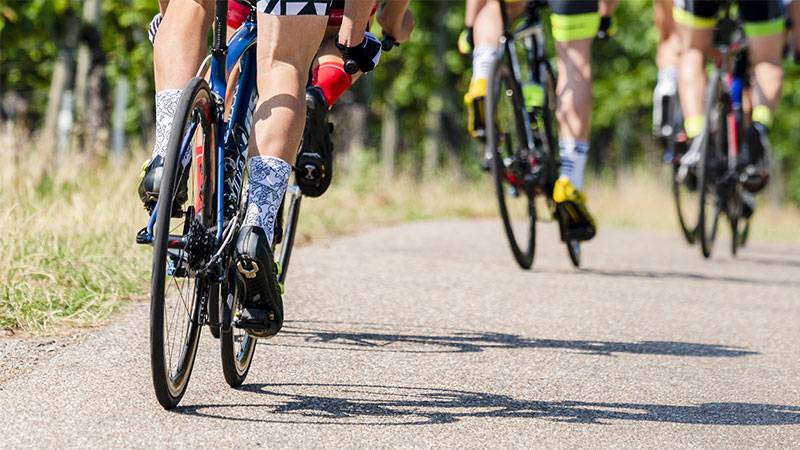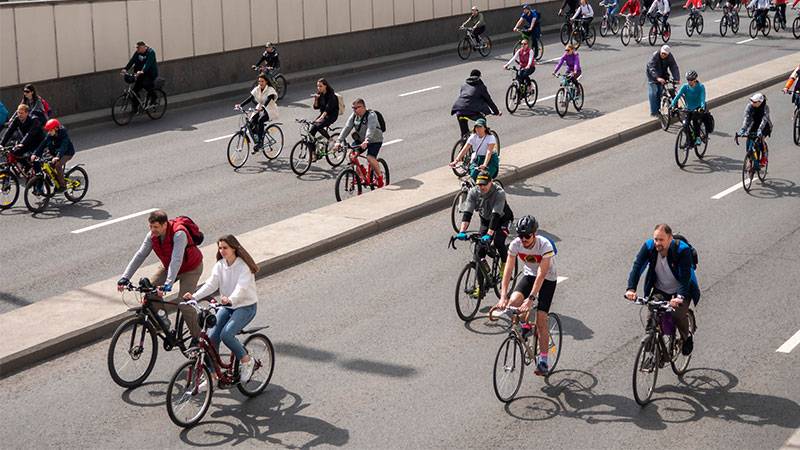Sustainable transportation isn't just a buzzword; it's a lifestyle choice that impacts our planet positively. As someone deeply committed to living sustainably, I've found cycling to be more than just exercise; it's my daily contribution to a healthier Earth.
In this article, I aim to guide you through planning your bicycle route for daily commutes. Whether you're a seasoned cyclist or considering the switch, I'm here to share insights and tips to make your journey smoother and greener.
Let's pedal towards a more sustainable future together, shall we?
Getting Started with Your Bicycle Commute Plan
Assessing Your Current Commute

Embarking on a bicycle commute starts with a clear assessment of your current journey. How far do you travel to work or school every day? The distance will significantly influence the type of bike you'll need and the prep you'll undertake. It's not just about the miles, though; time is of the essence. Consider how much time you're willing to dedicate to cycling each day.
Next, take a close look at the existing cycling infrastructure along your potential routes. Are there dedicated bike lanes, or will you be sharing the road with cars? Urban cycling infrastructure varies greatly from one area to another, so understanding what's available is crucial. This assessment isn't just about plotting a path; it's about ensuring that your journey is safe, efficient, and enjoyable.
Mapping out your commute this way does more than just get you from A to B; it integrates sustainable transportation into your daily routine, making a positive impact on your health, your wallet, and the planet.
Choosing the Right Bicycle
Selecting the right bicycle is crucial for a comfortable and efficient commute. The length of your journey plays a big role in this decision. For shorter commutes, a simple city bike might be perfect, offering comfort and ease of use. If your commute involves longer distances or varied terrain, consider a road bike or a hybrid for their speed and versatility.
Comfort is key. Ensure the bike fits your body to prevent strain or injury. Adjustable seats and handlebars can help achieve the perfect fit. Don't overlook the importance of a test ride; it's the best way to gauge the bike's comfort and suitability for your cycling route planning.
Remember, the right bike can turn your daily commute into a joyous journey, promoting both sustainable transportation and your well-being.
Planning Your Route
In the digital age, mapping tools and apps have revolutionized the way cyclists plan their routes. These tools are indispensable for navigating urban cycling infrastructure, identifying the most efficient paths, and ensuring safety on the road.
Google Maps is a go-to for many, offering detailed bike lanes and estimated travel times. Its user-friendly interface allows for easy comparison of different routes, helping you find the safest and most pleasant way to your destination.
For those seeking a more cyclist-focused experience, Strava and Komoot offer tailored features. Strava's heatmap is invaluable for discovering popular routes among local cycling communities, giving insights into where fellow cyclists prefer to ride. Komoot shines with its route customization based on your bike type and cycling preference, whether you're after a scenic ride or the fastest commute.
These apps also offer turn-by-turn navigation, a godsend for navigating through busy city streets or unfamiliar areas. By leveraging these mapping tools, you can enhance your daily commute preparation, making it safer, more efficient, and enjoyable. Remember, the best route is not only the shortest but also the one that prioritizes your safety and comfort, integrating seamlessly with the existing cycling infrastructure.
Safety First: Identifying Low-Traffic Roads and Bike Lanes

Prioritizing safety while planning your bicycle commute is essential. One key strategy is to identify low-traffic roads and dedicated bike lanes. These routes not only enhance your protection but also make your journey more enjoyable, away from the hustle and bustle of busy streets.
Start by using mapping tools specifically designed for cyclists, which highlight bike lanes and quieter streets. Local government websites are also a valuable resource, often providing maps of cycling infrastructure. Additionally, reaching out to cycling communities can offer insights into the safest routes; these are the paths vetted by experienced cyclists who know the area well.
Remember, bike lanes are your best ally on the road, designed to keep you separated from larger vehicles. They significantly reduce the risk of accidents, ensuring a safer and more secure commute. Always prioritize routes with well-marked bike lanes and low-traffic conditions to safeguard your journey to and from your destination.
Preparing for Your Commute
What to Pack: Essentials for the Bicycle Commuter
Equipping yourself with the right gear is crucial for a smooth and safe bicycle commute. Here's a checklist of essentials every cyclist should have:
- Helmet: Your number one safety item. Choose one that fits well and meets safety standards.
- Lights and Reflective Gear: Visibility is key, especially during early mornings, late evenings, or cloudy days. Front and rear lights, along with reflective clothing or accessories, make you noticeable to others.
- Repair Kit: A flat tire or loose bolt can happen. Pack a basic repair kit including a spare tube, patch kit, tire levers, a multi-tool, and a portable pump.
- Lock: A sturdy bike lock is essential to secure your bike at your destination.
- Water Bottle: Hydration is important, especially for longer commutes. A reusable water bottle can be mounted on your bike.
- Weather-Appropriate Clothing: Adapt to the weather with layers, waterproof garments, or breathable fabrics, ensuring comfort throughout your ride.
This compact but comprehensive kit will address common needs and challenges, keeping your focus on the joy and efficiency of cycling rather than potential disruptions.
Dealing with Weather and Other Challenges
Weather changes and nighttime riding present unique challenges to bicycle commuters. Being prepared is key to a smooth, enjoyable commute. For weather fluctuations, layering your clothing can offer flexibility and comfort. Waterproof gear is essential for rain, while breathable fabrics are best for warmer conditions. Always have a lightweight, reflective jacket for unexpected weather changes.
For nighttime riding, visibility is paramount. Equip your bike with front and rear lights to ensure you're seen by others. Reflective clothing or accessories enhance your visibility further. Lastly, keep an eye on weather forecasts and plan your attire and gear accordingly, adapting your route if necessary to avoid hazardous conditions. These simple preparations can make all the difference in navigating the challenges of daily commuting, keeping you safe and comfortable no matter what comes your way.
Staying Motivated and Overcoming Obstacles
Building a Routine and Keeping it Fun

Consistency is key to making your bicycle commute a staple of your daily routine. Setting realistic goals is the first step; start with commuting a few days a week and gradually increase as you become more comfortable. This approach helps build endurance and confidence without overwhelming you.
To keep your commute enjoyable, vary your routes. Exploring new neighborhoods or scenic paths can transform a mundane ride into an adventure, sparking joy and curiosity in your daily travels. This variety not only keeps your interest alive but also challenges different muscle groups, enhancing your cycling skills.
Remember, the journey is as important as the destination. By setting achievable goals and embracing the diversity of routes available, you turn your commute into a rewarding part of your day. This strategy ensures that cycling remains a fun, integral part of your lifestyle, contributing to your physical health, mental well-being, and commitment to sustainable transportation.
Community and Support: Finding Local Cycling Groups
Joining a local cycling group can significantly enhance your commuting experience. These communities offer a wealth of knowledge and support, from sharing the safest routes to tips on dealing with weather challenges. Riding with others can also boost your motivation, making your commute something to look forward to rather than a chore.
Moreover, these groups often advocate for improved urban cycling infrastructure, making cycling a safer and more accessible option for everyone. By connecting with fellow cyclists, you gain companionship, motivation, and a collective voice in promoting sustainable transportation. Embrace the cycling community for a richer, more supportive commuting journey.
Why Choose a Bike for Your Commute?

Choosing a bike for your daily commute is a powerful decision that benefits not just you but also the environment and society at large. On the environmental front, cycling plays a crucial role in reducing traffic congestion and air pollution. Every car replaced by a bike cuts down on carbon emissions, contributing to cleaner air and a healthier planet.
The health advantages of cycling cannot be overstated. It's a low-impact exercise that can fit into your daily routine, offering a convenient way to improve cardiovascular health, increase muscle strength, and reduce stress levels. Regular cycling has also been linked to a lower risk of chronic diseases, including heart disease, stroke, and type 2 diabetes.
Economically, biking is a wise choice. The cost of owning and maintaining a bicycle is a fraction of the expenses involved with a car, including fuel, insurance, and parking. This makes cycling an accessible and cost-effective mode of transportation, especially in urban areas where commuting distances are manageable.
Moreover, the shift toward cycling supports the development of sustainable urban cycling infrastructure, promoting a greener, more livable environment for everyone. By choosing to bike, you're not only investing in your health and saving money but also contributing to a sustainable future for our communities.
The Impact of Cycling on Urban Traffic and Pollution

The shift towards cycling has a profound impact on urban environments, particularly in reducing traffic congestion and cutting down pollution levels. Studies have shown that if just 10% of the population opted for bicycles over cars for short daily commutes, urban areas could see a significant decrease in air pollutants, including nitrogen oxides and particulate matter, which are key contributors to respiratory issues and environmental degradation.
In cities where cycling infrastructure has been prioritized, traffic congestion has noticeably decreased. This not only makes for smoother commutes for all road users but also contributes to a decrease in overall vehicle emissions. For instance, cities like Copenhagen and Amsterdam, which boast extensive cycling networks, report lower rates of traffic jams and pollution, showcasing the potential for other cities to follow suit.
Moreover, bicycles occupy far less space than cars, meaning that increased cycling can lead to more efficient use of urban spaces. Parking spaces for dozens of cars can be replaced by bike racks accommodating hundreds of bikes, further alleviating urban congestion.
By integrating cycling into daily life, cities can enjoy cleaner air, less congested roads, and a healthier population. The evidence is clear: promoting cycling is a key step toward sustainable urban living.
Conclusion
Throughout this article, we've explored the numerous benefits of cycling for daily commutes, from enhancing personal health and reducing environmental impact to saving on transportation costs. We've seen how cycling can alleviate urban traffic and pollution, making our cities cleaner and more livable.
The evidence is clear: incorporating cycling into your daily routine is a win-win for you, the community, and the planet. Now, I encourage you to take the next step. Plan your bicycle route, prepare for the journey, and join the growing community of cyclists. Let's pedal towards a more sustainable future together. Start planning your bicycle commute today!
Actionable Blog Posts
How to Plan a Bicycle Route for Your Daily Commute
Written by : Eunice Rodriguez | Published: March 11, 2024
Contents
Fed up with the daily grind of traffic jams and the never-ending search for parking? There’s a smarter, more enjoyable way to commute, and it’s probably leaning against your garage wall.
Sustainable transportation isn't just a buzzword; it's a lifestyle choice that impacts our planet positively. As someone deeply committed to living sustainably, I've found cycling to be more than just exercise; it's my daily contribution to a healthier Earth.
In this article, I aim to guide you through planning your bicycle route for daily commutes. Whether you're a seasoned cyclist or considering the switch, I'm here to share insights and tips to make your journey smoother and greener.
Let's pedal towards a more sustainable future together, shall we?
Getting Started with Your Bicycle Commute Plan
Assessing Your Current Commute
Embarking on a bicycle commute starts with a clear assessment of your current journey. How far do you travel to work or school every day? The distance will significantly influence the type of bike you'll need and the prep you'll undertake. It's not just about the miles, though; time is of the essence. Consider how much time you're willing to dedicate to cycling each day.
Next, take a close look at the existing cycling infrastructure along your potential routes. Are there dedicated bike lanes, or will you be sharing the road with cars? Urban cycling infrastructure varies greatly from one area to another, so understanding what's available is crucial. This assessment isn't just about plotting a path; it's about ensuring that your journey is safe, efficient, and enjoyable.
Mapping out your commute this way does more than just get you from A to B; it integrates sustainable transportation into your daily routine, making a positive impact on your health, your wallet, and the planet.
Choosing the Right Bicycle
Selecting the right bicycle is crucial for a comfortable and efficient commute. The length of your journey plays a big role in this decision. For shorter commutes, a simple city bike might be perfect, offering comfort and ease of use. If your commute involves longer distances or varied terrain, consider a road bike or a hybrid for their speed and versatility.
Comfort is key. Ensure the bike fits your body to prevent strain or injury. Adjustable seats and handlebars can help achieve the perfect fit. Don't overlook the importance of a test ride; it's the best way to gauge the bike's comfort and suitability for your cycling route planning.
Remember, the right bike can turn your daily commute into a joyous journey, promoting both sustainable transportation and your well-being.
Read More:
10 Best E-Bikes: Reviews and Buying Guide
Planning Your Route
Mapping Tools and Apps for Cyclists
In the digital age, mapping tools and apps have revolutionized the way cyclists plan their routes. These tools are indispensable for navigating urban cycling infrastructure, identifying the most efficient paths, and ensuring safety on the road.
Google Maps is a go-to for many, offering detailed bike lanes and estimated travel times. Its user-friendly interface allows for easy comparison of different routes, helping you find the safest and most pleasant way to your destination.
For those seeking a more cyclist-focused experience, Strava and Komoot offer tailored features. Strava's heatmap is invaluable for discovering popular routes among local cycling communities, giving insights into where fellow cyclists prefer to ride. Komoot shines with its route customization based on your bike type and cycling preference, whether you're after a scenic ride or the fastest commute.
These apps also offer turn-by-turn navigation, a godsend for navigating through busy city streets or unfamiliar areas. By leveraging these mapping tools, you can enhance your daily commute preparation, making it safer, more efficient, and enjoyable. Remember, the best route is not only the shortest but also the one that prioritizes your safety and comfort, integrating seamlessly with the existing cycling infrastructure.
Safety First: Identifying Low-Traffic Roads and Bike Lanes
Prioritizing safety while planning your bicycle commute is essential. One key strategy is to identify low-traffic roads and dedicated bike lanes. These routes not only enhance your protection but also make your journey more enjoyable, away from the hustle and bustle of busy streets.
Start by using mapping tools specifically designed for cyclists, which highlight bike lanes and quieter streets. Local government websites are also a valuable resource, often providing maps of cycling infrastructure. Additionally, reaching out to cycling communities can offer insights into the safest routes; these are the paths vetted by experienced cyclists who know the area well.
Remember, bike lanes are your best ally on the road, designed to keep you separated from larger vehicles. They significantly reduce the risk of accidents, ensuring a safer and more secure commute. Always prioritize routes with well-marked bike lanes and low-traffic conditions to safeguard your journey to and from your destination.
Read More:
How Fast Is An E-Bike?
Preparing for Your Commute
What to Pack: Essentials for the Bicycle Commuter
Equipping yourself with the right gear is crucial for a smooth and safe bicycle commute. Here's a checklist of essentials every cyclist should have:
This compact but comprehensive kit will address common needs and challenges, keeping your focus on the joy and efficiency of cycling rather than potential disruptions.
Read More:
E-Bike Conversion Kit Buying Guide: A Deeper Dive!
Dealing with Weather and Other Challenges
Weather changes and nighttime riding present unique challenges to bicycle commuters. Being prepared is key to a smooth, enjoyable commute. For weather fluctuations, layering your clothing can offer flexibility and comfort. Waterproof gear is essential for rain, while breathable fabrics are best for warmer conditions. Always have a lightweight, reflective jacket for unexpected weather changes.
For nighttime riding, visibility is paramount. Equip your bike with front and rear lights to ensure you're seen by others. Reflective clothing or accessories enhance your visibility further. Lastly, keep an eye on weather forecasts and plan your attire and gear accordingly, adapting your route if necessary to avoid hazardous conditions. These simple preparations can make all the difference in navigating the challenges of daily commuting, keeping you safe and comfortable no matter what comes your way.
Staying Motivated and Overcoming Obstacles
Building a Routine and Keeping it Fun
Consistency is key to making your bicycle commute a staple of your daily routine. Setting realistic goals is the first step; start with commuting a few days a week and gradually increase as you become more comfortable. This approach helps build endurance and confidence without overwhelming you.
To keep your commute enjoyable, vary your routes. Exploring new neighborhoods or scenic paths can transform a mundane ride into an adventure, sparking joy and curiosity in your daily travels. This variety not only keeps your interest alive but also challenges different muscle groups, enhancing your cycling skills.
Remember, the journey is as important as the destination. By setting achievable goals and embracing the diversity of routes available, you turn your commute into a rewarding part of your day. This strategy ensures that cycling remains a fun, integral part of your lifestyle, contributing to your physical health, mental well-being, and commitment to sustainable transportation.
Community and Support: Finding Local Cycling Groups
Joining a local cycling group can significantly enhance your commuting experience. These communities offer a wealth of knowledge and support, from sharing the safest routes to tips on dealing with weather challenges. Riding with others can also boost your motivation, making your commute something to look forward to rather than a chore.
Moreover, these groups often advocate for improved urban cycling infrastructure, making cycling a safer and more accessible option for everyone. By connecting with fellow cyclists, you gain companionship, motivation, and a collective voice in promoting sustainable transportation. Embrace the cycling community for a richer, more supportive commuting journey.
Why Choose a Bike for Your Commute?
Choosing a bike for your daily commute is a powerful decision that benefits not just you but also the environment and society at large. On the environmental front, cycling plays a crucial role in reducing traffic congestion and air pollution. Every car replaced by a bike cuts down on carbon emissions, contributing to cleaner air and a healthier planet.
The health advantages of cycling cannot be overstated. It's a low-impact exercise that can fit into your daily routine, offering a convenient way to improve cardiovascular health, increase muscle strength, and reduce stress levels. Regular cycling has also been linked to a lower risk of chronic diseases, including heart disease, stroke, and type 2 diabetes.
Economically, biking is a wise choice. The cost of owning and maintaining a bicycle is a fraction of the expenses involved with a car, including fuel, insurance, and parking. This makes cycling an accessible and cost-effective mode of transportation, especially in urban areas where commuting distances are manageable.
Moreover, the shift toward cycling supports the development of sustainable urban cycling infrastructure, promoting a greener, more livable environment for everyone. By choosing to bike, you're not only investing in your health and saving money but also contributing to a sustainable future for our communities.
Read More:
14 Amazing Benefits of Electric Bikes
The Impact of Cycling on Urban Traffic and Pollution
The shift towards cycling has a profound impact on urban environments, particularly in reducing traffic congestion and cutting down pollution levels. Studies have shown that if just 10% of the population opted for bicycles over cars for short daily commutes, urban areas could see a significant decrease in air pollutants, including nitrogen oxides and particulate matter, which are key contributors to respiratory issues and environmental degradation.
In cities where cycling infrastructure has been prioritized, traffic congestion has noticeably decreased. This not only makes for smoother commutes for all road users but also contributes to a decrease in overall vehicle emissions. For instance, cities like Copenhagen and Amsterdam, which boast extensive cycling networks, report lower rates of traffic jams and pollution, showcasing the potential for other cities to follow suit.
Moreover, bicycles occupy far less space than cars, meaning that increased cycling can lead to more efficient use of urban spaces. Parking spaces for dozens of cars can be replaced by bike racks accommodating hundreds of bikes, further alleviating urban congestion.
By integrating cycling into daily life, cities can enjoy cleaner air, less congested roads, and a healthier population. The evidence is clear: promoting cycling is a key step toward sustainable urban living.
Conclusion
Throughout this article, we've explored the numerous benefits of cycling for daily commutes, from enhancing personal health and reducing environmental impact to saving on transportation costs. We've seen how cycling can alleviate urban traffic and pollution, making our cities cleaner and more livable.
The evidence is clear: incorporating cycling into your daily routine is a win-win for you, the community, and the planet. Now, I encourage you to take the next step. Plan your bicycle route, prepare for the journey, and join the growing community of cyclists. Let's pedal towards a more sustainable future together. Start planning your bicycle commute today!
Eunice Rodriguez
Eunice is a sustainability writer whose passion is sharing accessible eco-friendly practices with GreenCitizen's global readership. She enjoys birdwatching during her downtime, often deriving inspiration from nature's resilience. An enthusiastic cyclist, she is also an ardent advocate of eco-friendly transport.
Quick Links
Green Living Guides
Green Jobs
Inspiring Green News
Green Directory
Green Store
Electronics Recycling
Category: Actionable Blog Posts, Sustainable Living, Transportation